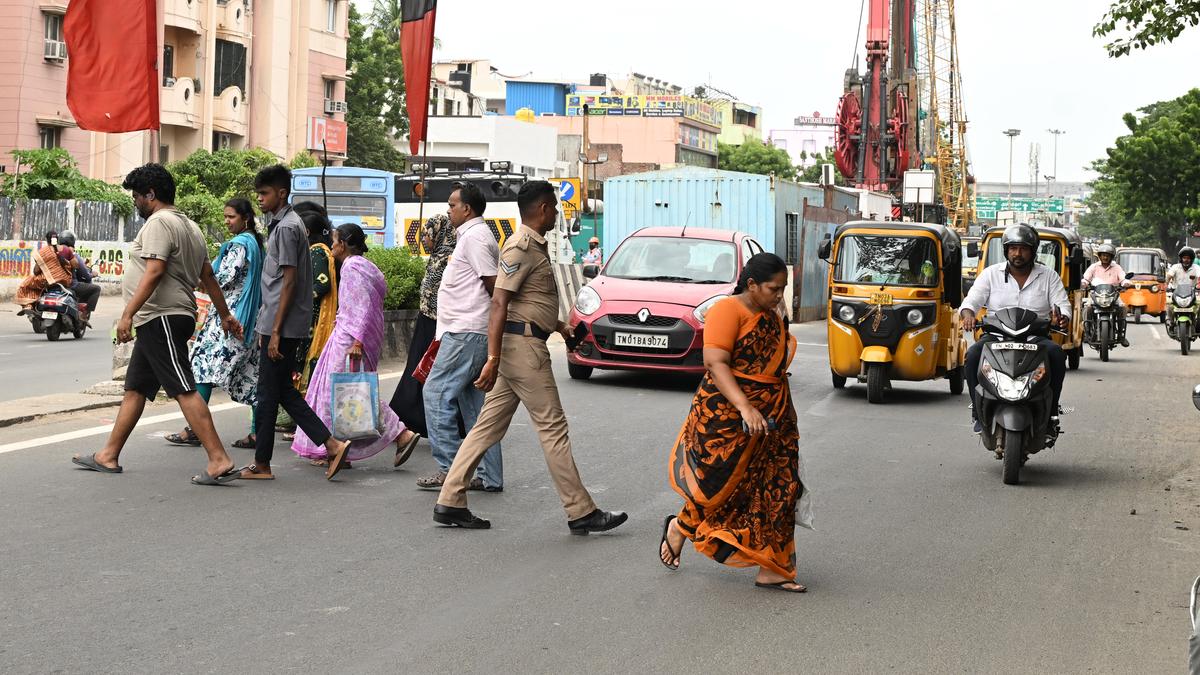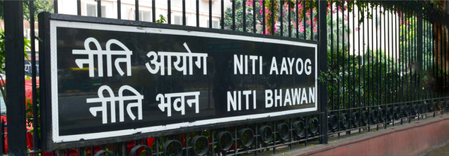MoRTH report: Tamil Nadu leads in road accidents yet again, highlighting need for urgent policy reform
By Nina Subramani
Copyright thehindu

After a rap on the knuckles from the Supreme Court, the Ministry of Road Transport and Highways (MoRTH) recently released its much-delayed Road Accidents in India 2023 report. Worryingly, the data shows that things are not improving for Indian road users. A total of 4,80,583 accidents were reported in 2023 – a 4.2% increase from 2022. These resulted in 1,72,890 deaths (up 2.6%) and 4,62,825 injuries (up 4.4%). On average, this translates into 1,317 accidents and 474 deaths every day.
Vulnerable road users, defined as pedestrians, bicyclists, and two-wheeler users, account for 68% of the total fatalities. In 2023, 35,221 pedestrians died – an increase of 2,396 from 2022. These figures indicate that the problem of road safety in India is a disaster that is unfolding before our eyes.
T.N.’s continuing burden
Tamil Nadu once again reported the highest number of road accidents. In 2023, the State recorded 67,213 accidents, accounting for 14% of the national total. This represents a 4.6% increase compared to 64,105 accidents in 2022. Fatalities also increased, from 17,884 in 2022 to 18,347 in 2023 – a 2.5% increase.
While Uttar Pradesh recorded the highest absolute number of fatalities (23,652), Tamil Nadu ranked second, contributing 10.6% of all deaths from road accidents nationwide.
The speed factor
The MoRTH report makes clear that overspeeding is the most significant factor behind road crashes and fatalities. In 2023, speeding accounted for 68.1% of road accident deaths nationwide, compared to 71.2% in 2022.
On National Highways in particular, overspeeding was responsible for 72.4% of accidents and 72.5% of deaths in 2023. In million-plus cities, it accounted for 63.7% of accidents and 60.8% of deaths. In Tamil Nadu, speeding caused a total of 13,363 crashes and 3,932 fatalities, including both highways under NHAI and the State PWD.
The presence of urban traffic on long stretches of high-speed highways in Tamil Nadu makes the lack of clear speed guidelines particularly dangerous.
While speeding remains a critical and unresolved issue, the data also shows that other systemic issues continue to claim lives. Potholes caused 5,840 accidents and 2,161 deaths in 2023, representing increases of 31% and 16% respectively compared to 2022. Wrong-side driving contributed to 5.5% of fatalities nationwide. Not using helmets and seatbelts contributed to over 54,000 and 16,025 deaths respectively. All these lives could have been saved with consistent maintenance of roads and strict enforcement of the law.
Limitations of MVA Act
The Motor Vehicles Amendment Act (MVAA) of 2019 was intended as a landmark reform, with stronger penalties and State-level safety councils. Yet, five years on, the data shows it has not addressed the structural causes of crashes. Three gaps are glaringly obvious.
At the State level, there is still a lack of a uniform, scientific framework for speed limits. Current limits are inconsistent and often unrelated to road design. The MVAA must mandate such a framework to make enforcement consistent and effective.
Enforcement on overspeeding remains uneven, largely targeting cars while two- and three-wheelers – linked to 44% of road deaths in 2023 – often escape scrutiny. The Act should bring all vehicles under speeding laws, with a tiered penalty system where fines rise with the degree of violation.
Moreover, the current provisions on child safety are vague, allowing either a seat belt or child restraint system (CRS) for those under 12. The Bureau of Indian Standards (BIS) must issue guidelines for CRS, which must be made mandatory for children under 12 or shorter than 150 cm. The BIS must also urgently issue norms for helmets that can be used by children on two-wheelers. In Tamil Nadu, where two-wheeler use dominates, these protections are overdue.
International comparisons make the urgency of reform even clearer. The World Health Organization (WHO) advocates the “Safe System” approach, which assumes human error is inevitable, and designs roads, vehicles, and laws to minimise the consequences. Countries that have adopted this model, including Sweden and the Netherlands, have steadily reduced fatalities to some of the lowest rates in the world.
Way ahead for T.N.
When Tamil Nadu released its Road Safety Policy in 2007, it set an example for the country. The State demonstrated that road safety required a coordinated policy approach rather than piecemeal measures. But since then, the lack of follow-through has left Tamil Nadu vulnerable, and the MoRTH report reflects the continuing crisis on the State’s roads.
Tamil Nadu thus needs to do two things urgently: first, adopt a State Road Safety Action Plan that sets measurable targets for reducing crashes and fatalities by 2030, coinciding with global deadlines, backed by consistent enforcement and investment in safer road design. Second, issue clear speed management guidelines backed by science and bring a much-needed discipline to our chaotic roads.
The figures in the MoRTH report are not just numbers; they represent preventable deaths and injuries. Let us remember that 5.5% of the total number of fatalities in India are lives below 18 – 9,489 children have died on our roads. By adopting a State-level action plan, Tamil Nadu can demonstrate that it values the lives of its youngest residents and regain its stature as a leader in road safety policy.
(Nina Subramani is senior researcher on the Road Safety & Sustainable Mobility team at Citizen consumer and civic Action Group.)



